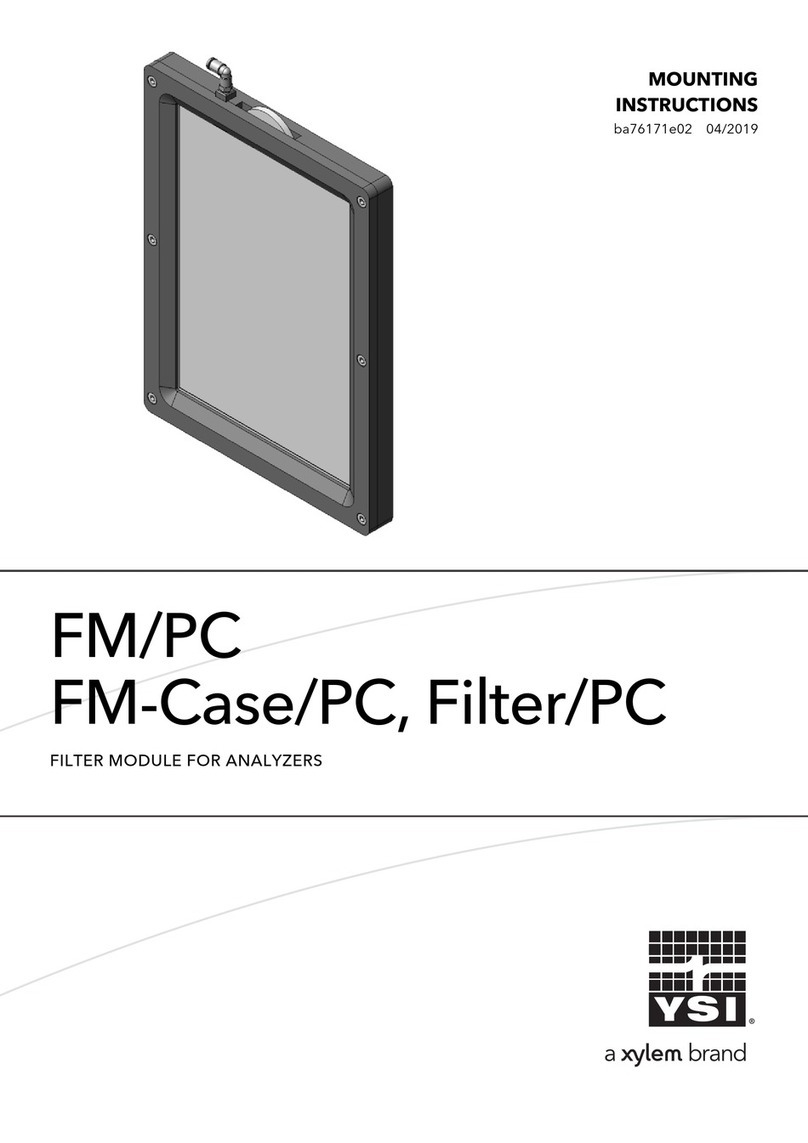
Table of Contents
1 Introduction and Safety........................................................................................................ 2
1.1 Introduction....................................................................................................................2
1.2 Safety terminology and symbols....................................................................................2
1.3 User safety.................................................................................................................... 3
1.4 Protecting the environment............................................................................................3
1.5 Spare parts.................................................................................................................... 3
1.6 End of life product disposal........................................................................................... 3
2 Transportation and Storage................................................................................................. 4
2.1 Examine the delivery..................................................................................................... 4
2.1.1 Examine the package............................................................................................. 4
2.1.2 Examine the unit..................................................................................................... 4
2.2 Storage guidelines.........................................................................................................4
3 Product Description..............................................................................................................5
3.1 Product overview........................................................................................................... 5
3.2 Process description....................................................................................................... 5
3.3 Parts.............................................................................................................................. 6
3.4 Operational limits...........................................................................................................6
4 Installation............................................................................................................................ 7
4.1 Precautions....................................................................................................................7
4.2 Prerequisites..................................................................................................................8
4.3 Install the CRS...............................................................................................................8
4.4 Pipe hanging installation................................................................................................8
4.5 Install the insulation....................................................................................................... 9
5 Operation........................................................................................................................... 10
5.1 Precautions..................................................................................................................10
5.2 Start up of the system..................................................................................................10
5.3 System venting and purging........................................................................................ 10
6 Maintenance.......................................................................................................................11
6.1 Precautions..................................................................................................................11
6.2 Examine the CRS........................................................................................................ 11
6.3 Clean the coalescing medium..................................................................................... 11
6.3.1 Close the isolation valve....................................................................................... 11
6.3.2 Drain the fluid........................................................................................................11
6.3.3 Remove the coalescing medium...........................................................................11
6.3.4 Install the CRS...................................................................................................... 11
6.4 Clean the magnetic insert............................................................................................12
6.4.1 Close the isolation valve....................................................................................... 12
6.4.2 Remove the magnetic insert................................................................................. 12
6.4.3 Drain the fluid........................................................................................................13
6.4.4 Install the magnetic insert..................................................................................... 13
6.5 Service the air bleed ports or drain plugs.................................................................... 13
Table of Contents
CRS Instruction Manual 1




























